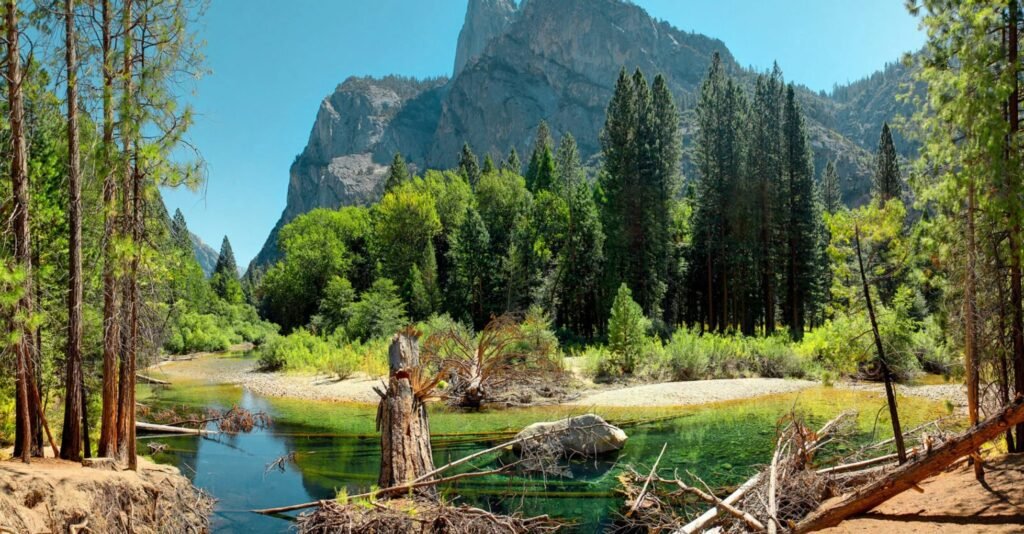
Crater Lake National Park

Oregon
Crater Lake National Park is located in southern Oregon and is renowned for its stunning scenery, pristine lake, and unique geological features. Here are some key details about Crater Lake National Park:
- Formation: Crater Lake was formed around 7,700 years ago following the collapse of Mount Mazama, a towering volcano. The collapse created a caldera that eventually filled with rainwater and snowmelt, forming the deep and exceptionally clear Crater Lake.
- Crater Lake: The lake is the main attraction of the park and is the deepest lake in the United States, reaching a maximum depth of about 1,943 feet (592 meters). The intense blue color of the lake is due to its depth and purity.
- Wizard Island: Within Crater Lake, you’ll find Wizard Island, a cinder cone that rises prominently from the water. Visitors can take boat tours to the island and explore its unique features.
- Rim Drive: A scenic road called Rim Drive encircles the lake, providing stunning panoramic views from various vantage points. It’s a popular route for sightseeing and photography.
- Cleetwood Cove Trail: This is the only trail that leads to the shore of Crater Lake. It’s a moderately strenuous hike that takes you down to the lake, where boat tours depart for Wizard Island.
- Wildlife: The park is home to a variety of wildlife, including black bears, elk, deer, and a variety of bird species. Visitors should be cautious and respectful of the park’s wildlife.
- Seasonal Access: Crater Lake National Park is subject to heavy snowfall during the winter, and certain areas of the park may be closed during this time. The majority of the park is typically accessible from late June to October.
- Visitor Centers: The park has two visitor centers, the Steel Visitor Center and the Rim Village Visitor Center, where visitors can learn more about the park’s geology, history, and recreational opportunities.
Before planning a visit to Crater Lake National Park, it’s advisable to check the official park website or contact the park directly for the latest information on road conditions, trail access, and any alerts or closures.











Responses